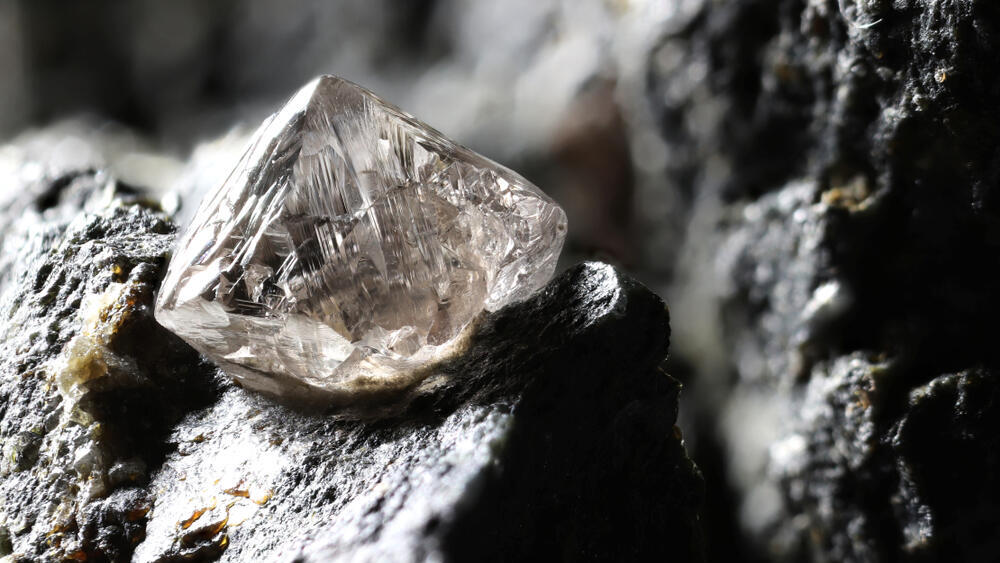Getting your Trinity Audio player ready...
In recent years, two methods for growing diamonds in laboratories have gained momentum, leading to a growing presence of lab-grown diamonds in the market each year. Natural diamonds formed deep within the Earth’s mantle – at depths of 75 to 150 miles – and brought to the surface through volcanic eruptions, typically hold higher market value and command significantly higher prices.
As a result, determining whether a diamond is natural or lab-grown has become increasingly important for accurate valuation. The current method for distinguishing between natural and synthetic diamonds involves analyzing the crystal growth directions. While reliable, this process is costly and conducted in specialized gemological laboratories that focus on identifying, grading and classifying gemstones.
More affordable systems using fluorescence detection have emerged as alternatives. These systems analyze energy emissions in diamonds, which produce a violet glow under ultraviolet light, to help differentiate natural diamonds. However, these methods are not universally effective for all types of stones.
Research conducted at Ariel University, as part of Dr. Yossi Rabinovich's doctoral studies, offers a novel approach to diamond identification. Guided by Professor Haim Cohen from the Department of Chemical Sciences and Professors Yossi Pinhasi and Asher Yahalom from the Department of Electrical and Electronics Engineering, the study focuses on diamond characterization using advanced technologies.
The project, funded by Israel’s Innovation Authority under the Kamin program, has introduced a method to differentiate between natural diamonds and synthetic ones produced via the high-pressure, high-temperature (HPHT) process.
HPHT mimics the extreme conditions in the Earth’s mantle to create synthetic diamonds. The new approach relies on spectral signatures measured in a waveguide at gigahertz frequencies. Unlike existing methods, this technique offers a lower-cost solution and enables characterization before the diamond is polished.
3 View gallery


The device used by Ariel University researchers to characterize and distinguish between types of diamonds
(Photo: Ariel University)
“The key to our method lies in characterizing diamonds based on their spectral signatures within the microwave and millimeter-wave frequency ranges,” Rabinovich said. “One major advantage is the ability to perform this analysis on rough, unpolished diamonds, which is a significant challenge for existing equipment.”
The technology also enables color grading in rough diamonds using the same system, addressing another critical aspect of valuation. “Current equipment struggles with raw diamonds due to its reliance on shorter wavelengths, which are overly sensitive to the diamond’s outer surface,” Rabinovich explained. “By using longer wavelengths – around 1 millimeter – our method focuses more on the diamond’s material properties, such as nitrogen concentration, which significantly affects color, and less on its surface texture.”
3 View gallery


Natural diamonds with different levels of nitrogen and color
(Photo: Ariel University)
This dual capability – distinguishing between natural and synthetic diamonds and grading their color –has garnered significant interest within the diamond industry. The system's ability to assess a diamond’s color at the raw stage is particularly beneficial for traders who face challenges in evaluating rough diamonds’ worth before cutting and polishing.
Synthetic diamonds, which are flooding the market, are priced considerably lower than natural diamonds, underscoring the importance of reliable identification tools. In December 2023, the U.S. approved this innovative system as a patent, with registrations in Europe and Israel expected to follow.
While the system is designed for characterization rather than diamond detection, its capacity to differentiate between diamond types and assess value is seen as a breakthrough for the industry.
Get the Ynetnews app on your smartphone:


